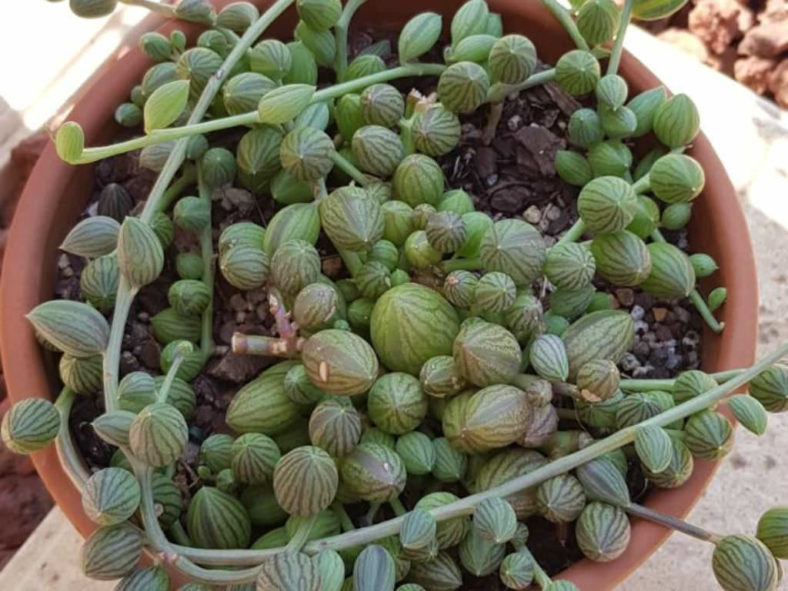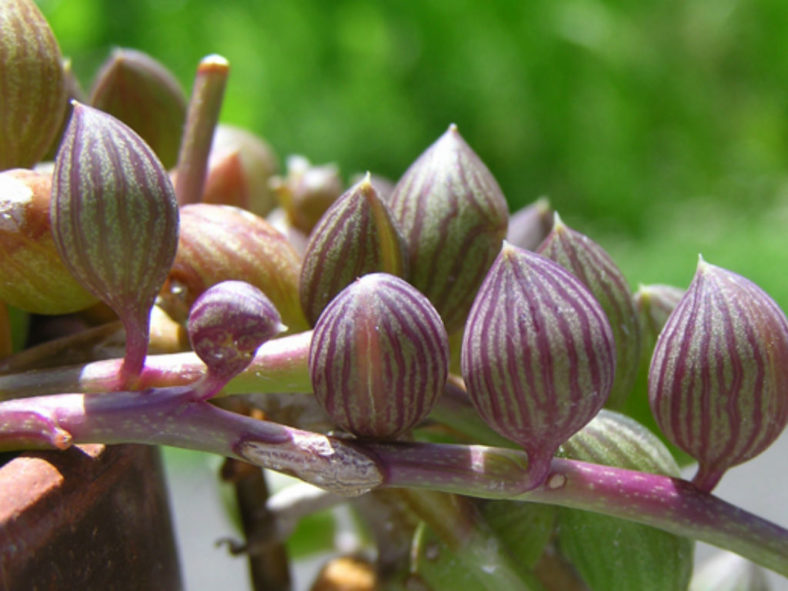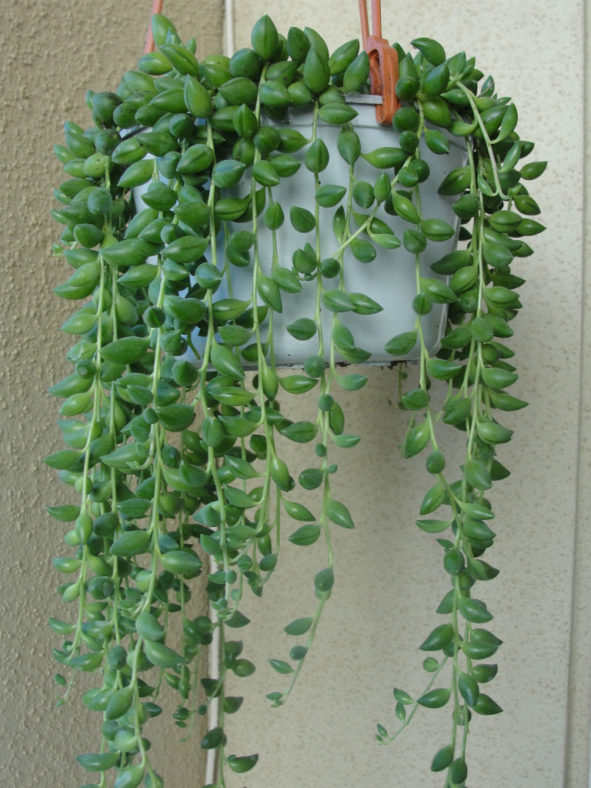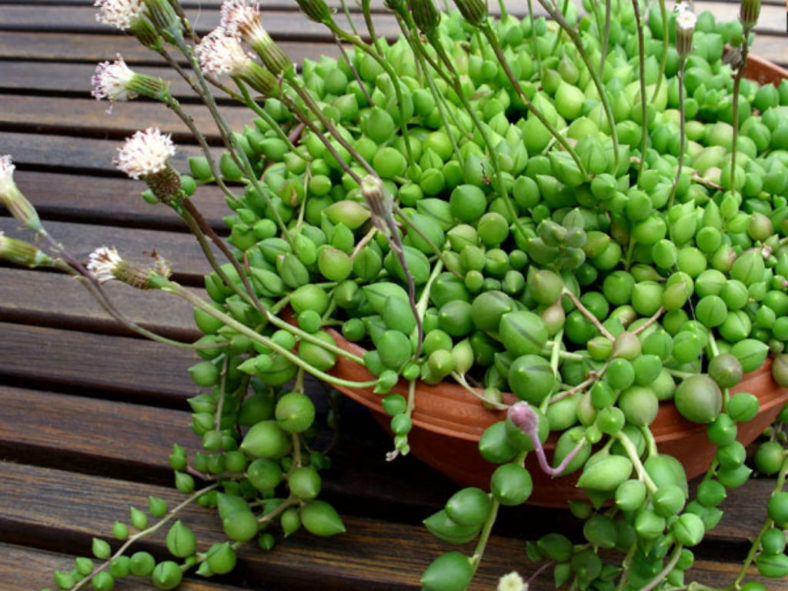Scientific Name
Curio herreanus (Dinter) P.V.Heath
Common Name(s)
Gooseberry Plant, String of Beads, String of Pearls, String of Raindrops, String of Tears, String of Watermelons
Synonym(s)
Kleinia herreana, Kleinia herreiana, Senecio herreanus, Senecio herreianus
Scientific Classification
Family: Asteraceae
Subfamily: Asteroideae
Tribe: Senecioneae
Subtribe: Senecioninae
Genus: Curio
Etymology
The specific epithet "herreanus" (pronounced her-ray-AY-nus) honors Adolar Gottlieb Julius (Hans) Herre (1895-1979), a German botanist, explorer, and curator of the Stellenbosch University Botanical Garden.
Origin
Curio herreanus is native to Namibia and South Africa.
Description
Curio herreanus, formerly known as Senecio herreanus or Senecio herreianus, is a stunning succulent with trailing stems and egg-shaped leaves. It looks similar to Curio rowleyanus but has larger and more elongated leaves. The slender stems can grow over 12 inches (30 cm) long, trailing from a pot or creeping along the ground and rooting at the nodes. The leaves are green, lined with fine dark green or purple stripes, and translucent "windows." Exposure to bright sunlight will deepen the purple tones on the leaves and stems.
The flowers are small, brush-like, white to nearly white, and appear from spring to fall on long stalks.

How to Grow and Care for Curio herreanus
Light: Keep Curio plants in partial shade if outdoors, which is their preference in summer, and bright sunlight if indoors. They will grow in full shade but will become lank and leggy.
Soil: These plants prefer well-drained soil. For growing Curio indoors, using a container with at least one drainage hole at the bottom is essential.
Hardiness: Curio herreanus can withstand temperatures as low as 25 to 50 °F (-3.9 to 10 °C), USDA hardiness zones 9b to 11b.
Watering: Curio plants are drought tolerant, but the soil should never be left dry for too long. They need some water during the growing season, but be careful not to leave the soil wet for prolonged periods.
Fertilizing: The members of this genus can take a bit more fertilizer than other succulents if you want them to grow fast.
Repotting: You do not need to repot Curio plants often. You can do it when the container becomes too small or shallow.
Propagation: These plants can be grown from seeds or cuttings.
Learn more at How to Grow and Care for Curio.
Toxicity of Curio herreanus
Curio plants are toxic. Grow them with great care if you have children, pets, or livestock.
Forms of Curio herreanus
Links
- Back to genus Curio
- Succupedia: Browse succulents by Scientific Name, Common Name, Genus, Family, USDA Hardiness Zone, Origin, or cacti by Genus
Photo Gallery
Click on a photo to see a larger version.


